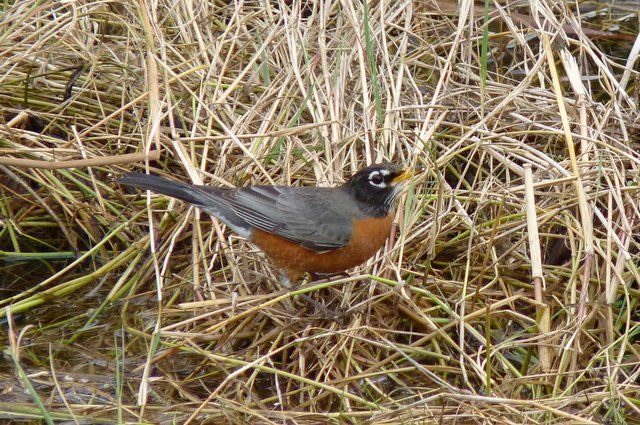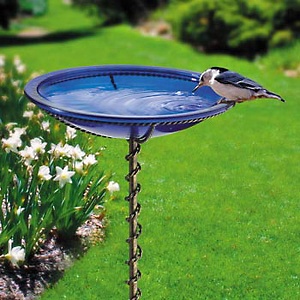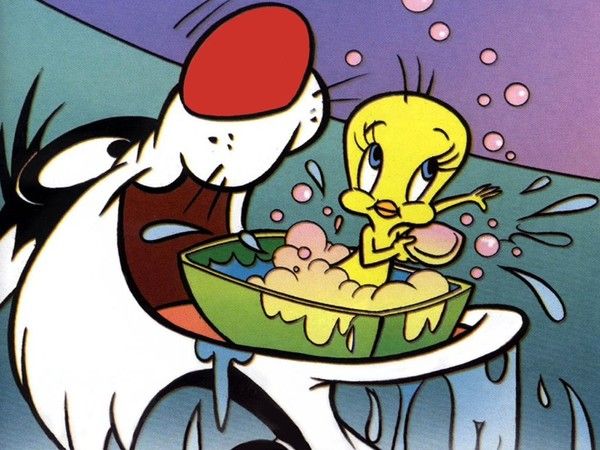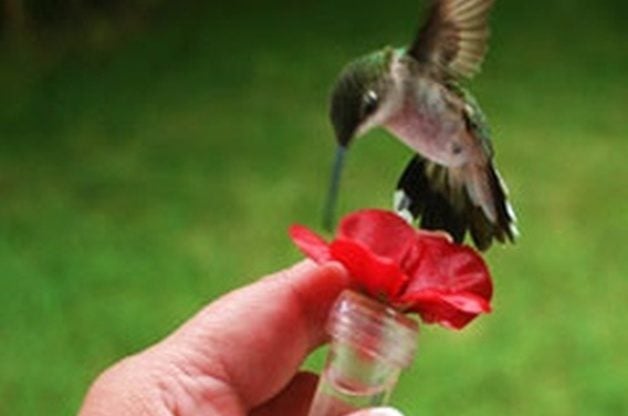By Ken Keffer
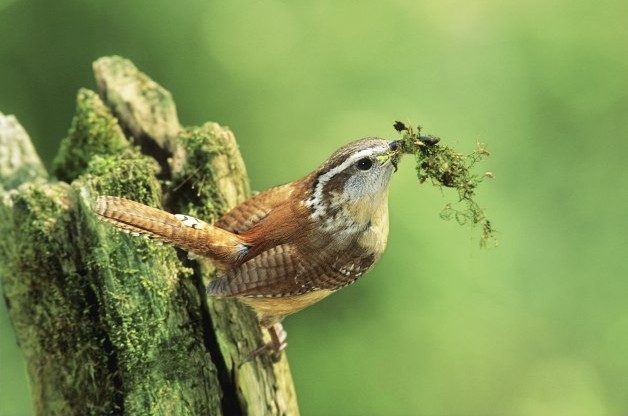
Steve and Dave Maslowski
.
When wrens start to gather nesting material, you know spring has arrived!
We all need little signs of hope.
.
When the wind chill dips and another bout of cold weather shows up in the forecast, we start wishing and dreaming of spring more than ever. For gardeners, crocuses and daffodils poking up through the snow offer hope. But what about the birders? What cues do we look forward to?
.
This was no easy task, but after chatting about it with some bird friends and quizzing Birds & Blooms readers online, I finally narrowed my list down to eight great spring birds moments. Now, I’m not declaring this a perfect list—after all, birding varies throughout the country. A sign of spring in my Wisconsin backyard doesn’t necessarily happen in my grandma’s Wyoming garden. But I think it’s a pretty good start. Follow my countdown of some of the most celebrated and anticipated bird moments of spring. Do you agree with my number one pick?
.
8. Phoebes perched on the edge of yards. Most flycatchers wait until a few more bugs are available for eating before returning from their winter ranges. However, phoebes are able to adapt their diets, so they’re among the earliest of the spring migrants.
.
Watch for the tail bobs of phoebes near the edge of your yard. They will nest in close proximity to humans, so their return is like welcoming an old friend back from winter vacation. Phoebes can build a nest on nearly any ledge, but why not make it easier for them? Just as you’d do for a robin, place a nesting shelf platform under your eaves and invite them into your backyard.
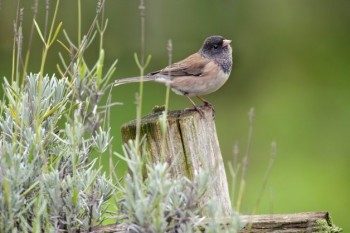
Steve and Dave MaslowskiDark-Eyed Juncos head north in spring, so when they leave, you know warmer weather isn’t far behind.
.
7. Dark-eyed juncos flying north. The first phoebe sighting of the year is easy to record. But marking the departure of a species can also be an important indicator. For some folks, juncos are the ultimate snowbird. So when the juncos leave, spring has arrived. (Remember, though, that for birders in the far north, the return of the juncos signals the return of their spring.) Other species can also frequent your backyard during the winter months but move on to greener pastures as you welcome spring. Perhaps you were lucky enough to host a flock of redpolls or siskins this winter. Treasure those visitors, because these irruptive nomads will head back north, where traces of winter linger.
.
6. The tap, tap, tap of woodpeckers. Spring is the season for attracting a mate, and this will translate to the drumming of woodpeckers. Most of us rejoice at the sound of strumming woodpeckers—as long as they aren’t tapping on our downspouts. This is just one sign of mating season, though. Keep an eye out around your backyard and try to spot other rituals—a male bird feeding a lady friend, courtship dances, males fluffing up their feathers for females. These are all signs that new life is ahead.
,
To attract woodpeckers, use a larger nest box designed specifically for woodpeckers. You might add a few wood chips to the bottom of it to make it look even more appealing. Another easy way to bring woodpeckers to your yard is by offering high-fat foods. Suet can be a year-round treat. Peanuts, both in and out of the shell, are also popular.
.
5. Red-winged blackbirds singing. Optimists might mark spring with the arrival of red-winged blackbirds. These folks fully accept there might be another snowstorm or two, but the sight of these early migrants gives them hope that winter will eventually thaw out the marshes and spring will return. Male red-winged blackbirds start staking out territories in early March, and the females follow eventually. It’s hard to miss the arrival of these blackbirds in spring. They perch high up on the tops of cattails and belt out raucous calls. If you want to see them, head to marshy areas, but be wary, or at least wear a hat. They have a reputation for being strong defenders of their territory.
.
4. Hummingbirds and orioles sipping sugar water. You know spring is in the air when you hang the first batch of nectar for the season. I have to relearn the sugar water recipe every spring, so let me save you that step—it’s four parts water to one part sugar, and that’s for both hummingbirds and orioles. As these spring birds march northward from their winter homes in Central America, many fly directly across the Gulf of Mexico. They reach the Gulf states in early March and hit their more northern breeding grounds by April. Like the blackbirds, males arrive a week or two before the females.
.
Aside from putting out sugar-water feeders, you can entice orioles with fresh oranges or grape jelly. As for hummingbirds, it can really help to have early blooms out in the garden. If you’re ready for both species, you might be able to attract them right away. Then they’ll stop to nest, and you’ll see them all summer.
,
3. Wrens gathering nesting material. Spring is nesting season for most birds, and when you see a wren carrying nesting material, it definitely makes winter feel like a distant memory. Most wrens get an early start on nesting. They are prolific breeders, cranking out two or three broods of nestlings each spring and summer. Research indicates young male house wrens set up territories closer to established males, perhaps as a way to ensure they are nesting in suitable areas.
Don’t wait for the return of the cavity nesters before checking your nest boxes to make sure they’re ready to go for the season. Replace or repair any that were damaged over winter, and rehang predator guards early. You can even hang pieces of string, yarn and other materials in an old suet cage to help provide material for nests.
.
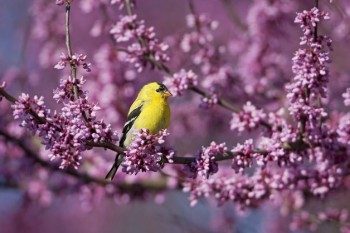
Richard Day / Daybreak ImageryGoldfinches become brilliant spring birds when they molt into their bright yellow coats.
.
2. The molting of goldfinches. Perhaps the most celebrated of bird molts is the spring change of the American goldfinch. Although goldfinches don’t migrate, it might seem that they disappear from the landscape during winter. The males turn from vibrant yellow to a drab olive green during colder months, becoming less conspicuous. While molting goes nearly unnoticed in many species, the first subtle hint of lemon yellow on the male goldfinch is a classic sign that spring is upon us.
To bring these beloved birds to your yard, offer thistle seed year-round. Once you get them established, you can put up one of those giant tube feeders that can attract 20-plus birds at a time. As a bonus, you don’t have to worry about squirrels with this type of feeder or seed.
.
1. Robins digging for worms. Though a few hardy robins can overwinter in some pretty harsh conditions, these spring birds are still the ultimate sign of spring for many people. Just imagine that first robin scampering across the backyard—you know sunny days are around the corner. This doesn’t necessarily mean robins were in the South and are just now migrating. After all, we’ve seen plenty of pictures of robins hanging out in the snow. It’s more about the timing. April showers bring May flowers, but that’s not all. The rain brings thawing and worms to the surface, and that’s why you start to see them plucking up the plump morsels of nutrition.
.
If you want to be especially welcoming to robins in your backyard, you could offer mealworms as a special treat (the bluebirds will love ’em, too). Another option is to put up a nesting shelf, since robins don’t use birdhouses.
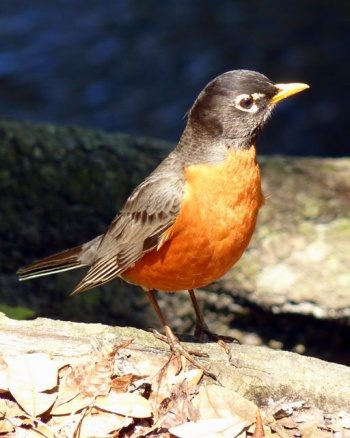 The American Robin (Turdus migratorius) is easy to identify, with its bold orange breast and distinctive white circle around the eyes. Throughout the spring and summer, they’re a common sight on lawns throughout most of the the U.S. and up through Canada, pulling worms from the soil. In winter, they seem to disappear – but chances are, they’re still around. While northern robins do migrate south from Canada and southern robins expand their range into Florida and Mexico, the rest of the U.S. plays host to robins year-round.
The American Robin (Turdus migratorius) is easy to identify, with its bold orange breast and distinctive white circle around the eyes. Throughout the spring and summer, they’re a common sight on lawns throughout most of the the U.S. and up through Canada, pulling worms from the soil. In winter, they seem to disappear – but chances are, they’re still around. While northern robins do migrate south from Canada and southern robins expand their range into Florida and Mexico, the rest of the U.S. plays host to robins year-round. New topic
New topic Printable
Printable
 Report post to moderator
Report post to moderator
